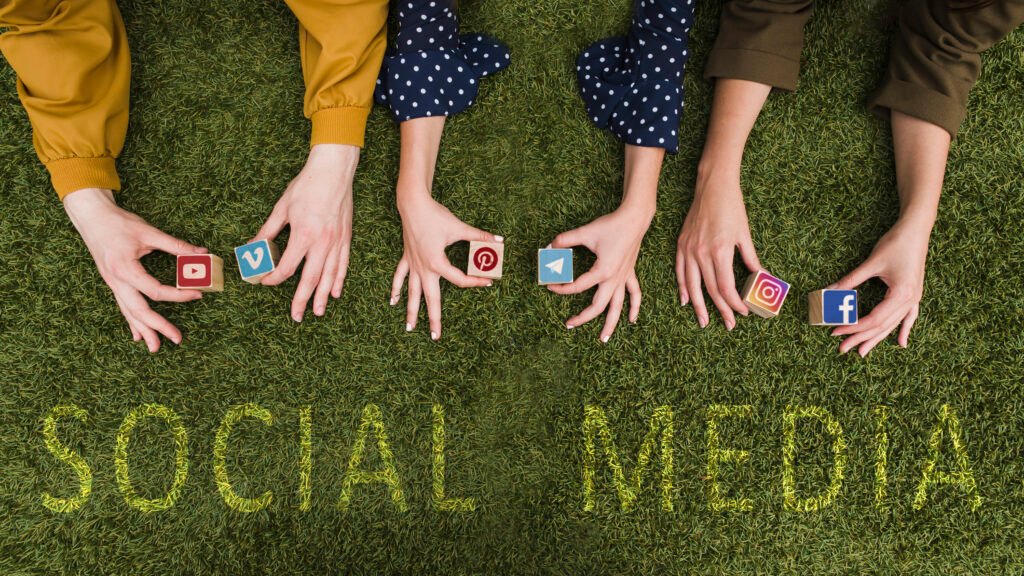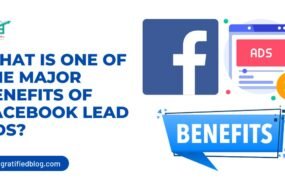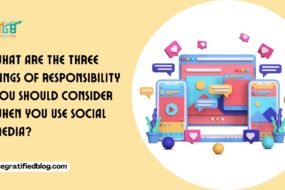
In today’s world, the impact of media on our lives cannot be understated. The emergence of new communication platforms like social media has transformed how we connect, consume information, and interact with the world around us. On the other hand, traditional media plays a crucial role in molding public sentiment and influencing our daily lives. In this blog, we will help you comprehend the distinctions between social media vs traditional media in detail.
So, let’s dive in.
What Are Social Media And Traditional Media?

Social media denotes digital platforms enabling users to generate, share, and interact with content, ideas, opinions, and information in real time.
It has become an increasingly popular form of communication in the digital age due to its accessibility, broad reach, and cost-effectiveness.
Platforms like Facebook, Instagram, and Twitter in social media serve as examples, such as YouTube, TikTok, LinkedIn, and more.
On the other hand, traditional media refers to the more established forms of communication, such as television, radio, and newspapers, that have been used for many decades to convey news and information to the public.
Traditional media is often considered to have high credibility and is more formal in its presentation. However, traditional media is usually more expensive and has less interactivity than social media.
We all know the basics; let’s dive deeper into Social Media vs. Traditional Media;
Comparison Between Social Media Vs. Traditional Media
In today’s digital age, businesses and organizations have a plethora of options when it comes to marketing and advertising.
However, the most popular forms of marketing are social media and traditional media. At the same time, both benefit from getting a clear idea between them.
Let’s examine the differences between social media and traditional media in terms of the following:
- Differences In Audience Reach
A notable distinction between social media and traditional media is the audience reach. Traditional media outlets like television and radio have a broader reach than social media platforms.
These platforms can reach millions of people simultaneously, making them ideal for businesses and organizations that want to get a large audience quickly.
For instance, a television advertisement during a popular sporting event or a primetime show can reach millions of people, which is not possible on social media.
However, social media platforms offer unique audience targeting capabilities, which traditional media outlets cannot match. Social media platforms enable businesses and organizations to target particular audiences according to demographics, interests, and behavior.
This level of targeting allows businesses to tailor their messages to specific groups and increase the effectiveness of their campaigns. However, both of the media have a great audience reach.
- Differences In Cost
Another significant difference between social media and traditional media is the cost.
Conventional media channels, including television and print media, can be expensive to produce and distribute.
For example, producing a television commercial can cost hundreds of thousands of rupees/dollars, while placing an advertisement in a newspaper or magazine can also be costly.
On the other hand, social media platforms are relatively inexpensive, with many platforms offering free options for businesses and organizations to create and post content.
Similarly, paid advertising on social media platforms is significantly less expensive than traditional media outlets. It entirely depends upon the business to spend on the advertisements.
- Differences In Credibility
Credibility is an essential factor for businesses and organizations regarding marketing and advertising.
Conventional media sources, such as newspapers and broadcasting news, have established reputations for providing reliable and accurate news and information. They are often seen as trustworthy sources of information by the public.
On the other hand, social media has a reputation for spreading misinformation and fake news.
However, businesses and organizations can build credibility on social media by providing accurate information and engaging with their audience transparently and authentically.
- Differences In Interactivity
Interactivity is another significant difference between social media and traditional media.
Social media platforms facilitate interactive communication between businesses and their audience, allowing them to build relationships and engage in conversations.
However, traditional media outlets offer a different level of engagement, as they are primarily one-way communication channels.
This level of interactivity can increase brand loyalty and build customer trust.
- Differences In User-Generated Content
User-generated content is content that users create rather than businesses or organizations.
Social media platforms are known for their user-generated content, including posts, comments, reviews, and photos. This content can give businesses and organizations valuable insights into customers’ wants and needs.
Traditional media outlets only sometimes allow for user-generated content, which can limit audience engagement and participation.
However, both outlets have their positive and negative sides regarding marketing and advertising. So, it’s up to the business to choose the one that best suits their requirements.
Influence Of Social Media Vs Traditional Media In Society
Social media has become essential to our everyday existence and significantly impacts society. There are both positive and negative impacts of social media on society. Let’s discuss the:
Positive impact:
- Connectivity: It has brought people from all over the world closer. It has made communication more accessible, and people can connect in real time.
- Awareness: It’s an excellent platform for spreading awareness about various social and environmental issues. It has made people more aware and conscious of their surroundings.
- Business: It has transformed the way businesses operate. It has opened up new avenues for advertising, marketing, and sales.
- Education: Social media has also had a positive impact on education. It has made learning more accessible, and people can now take courses and attend lectures anywhere in the world.
Negative Impact:
- Cyberbullying: Social media has led to an increase in cyberbullying. It has become more accessible for people to hide behind anonymity and bully others online.
- Dependency: The prevalence of social media addiction is on the rise. People spend more time on social media, affecting their mental health and productivity.
- Spread of misinformation: Social media is also responsible for the spread of misinformation. Fake news and conspiracy theories are circulated, which can have severe consequences.
- Privacy: It has raised privacy concerns. Personal information is being shared on social media, which can be misused.
Traditional media has been around for centuries and has profoundly impacted society. Here are some positive and negative impacts of conventional media on society.
Positive impact:
- Credibility: It has a reputation for being more credible than social media. People trust traditional media sources more and are likelier to believe what they report.
- Education: It has played a significant role in education. It has been a source of information and knowledge for people for many years.
- Entertainment: Traditional media has also been a source of entertainment. Television shows, movies, and radio programs have been a part of people’s lives for decades.
- Community building: Traditional media has helped build communities. Local newspapers and radio stations have united people and created a sense of belonging.
Negative impact:
- Bias: Traditional media has been accused of being biased. News sources may have their agenda and may not report facts accurately.
- Limited reach: Traditional media has limited reach compared to social media. It may not be accessible to everyone, especially those in remote areas.
- Cost: Traditional media can be expensive to produce and distribute. This cost is often passed on to consumers, making accessing it difficult for some people.
- Limited interactivity: Traditional media is limited in its interactivity. People must refrain from interacting with the content, which may restrict engagement and interest.
Now that you have a clear understanding of Social media vs Traditional media. Please choose the one that best suits your business requirements and start driving results.
Should you have any inquiries related to the subject, please leave them in the comment section. We will be happy to answer you.
Thanks for reading 🙂
Also, Read – Content Marketing vs Digital Marketing: How To Incorporate Them?








No Comments